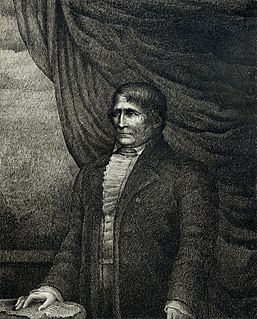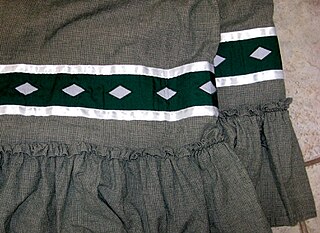Related Research Articles

Osage County is the largest county by area in the U.S. state of Oklahoma. Created in 1907 when Oklahoma was admitted as a state, the county is named for and is home to the federally recognized Osage Nation. The county is coextensive with the Osage Nation Reservation, established by treaty in the 19th century when the Osage relocated there from Kansas. The county seat is in Pawhuska, one of the first three towns established in the county. The total population of the county is 47,987.
Salina is a town in Mayes County, Oklahoma, United States. The population was 1,396 at the 2010 census, a slight decline from the figure of 1,422 recorded in 2000.

Pawhuska is a city in and the county seat of Osage County, Oklahoma, United States. It was named after the 19th-century Osage chief, Paw-Hiu-Skah, which means "White Hair" in English. The Osage tribal government, which opened offices in Pawhuska in 1872 when its reservation was established in Indian Territory, continues to be based in Pawhuska.

The Osage Nation is a Midwestern Native American tribe of the Great Plains. The tribe developed in the Ohio and Mississippi river valleys around 700 BC along with other groups of its language family. They migrated west after the 17th century, settling near the confluence of the Missouri and Mississippi rivers, as a result of Iroquois invading the Ohio Valley in a search for new hunting grounds.
White Hair (Pawhuska) is the English name of several Osage leaders in the eighteenth and nineteenth century. A tintype image of White Hair can be seen at the Osage Nation Museum in Pawhuska, Oklahoma.

The Cutthroat Gap massacre occurred in 1833, "The Year the Stars Fell" in Oklahoma. A group of Osage warriors charged into a Kiowa camp and brutally slaughtered the women, children and elderly there. Most of the warriors of this group of Kiowas, headed by Chief A'date or "Islandman" had left to raid a band of Utes or had gone bison hunting. The camp was left mainly unguarded and when the Osage came, the Kiowas had no choice but to flee. The Osage killed approximately 150 Kiowa people and took their sacred Tai-me medicine bundle and two children captive.
The Battle of Claremore Mound, also known as the Battle of the Strawberry Moon, or the Claremore Mound Massacre, was one of the chief battles of the war between the Osage and Cherokee Indians. It occurred in June 1817, when a band of Western Cherokee and their allies under Chief Spring Frog (Too-an-tuh) attacked Pasuga, an Osage village at the foot of Claremore Mound. The village was nearly empty; only women, children, and the very sick and elderly remained there. Most of the village was currently away on a seasonal hunt that often lasted up to three or four months. The Cherokee killed or captured every remaining member of Chief Clermont's band and destroyed everything they could not carry away. Historians consider it one of the bloodiest Native American massacres in modern history.

Fort Osage was an early 19th-century factory trading post system run by the United States Government, on the American frontier being located in present-day Sibley, Missouri. The Treaty of Fort Clark was signed with certain members of the Osage Nation in 1808 calling for the creation of Fort Osage. It was one of three forts established by the U.S. Army to establish control over the newly acquired Louisiana Purchase territories. Fort Madison in SE Iowa was built to control trade and pacify Native Americans in the Upper Mississippi River region. Fort Belle Fontaine near St. Louis controlled the mouth of the Missouri. The fort ceased operations in the 1820s as the Osage in subsequent treaties ceded the rest of their land in Missouri. A replica of the fort was rebuilt on the site between 1948 and 1961. The Fort Osage school district, which serves northeast Independence and the surrounding area, was named after it.

Jean-Pierre Chouteau was a French Creole fur trader, merchant, politician, and slaveholder. An early settler of St. Louis from New Orleans, he became one its most prominent citizens. In 1975, he was inducted into the Hall of Great Westerners of the National Cowboy & Western Heritage Museum.
Auguste Pierre Chouteau was a member of the Chouteau fur-trading family who established trading posts in what is now the U.S. state of Oklahoma.

Marjorie Tallchief is a former ballerina of the Osage Nation. She is the younger sister of the late prima ballerina, Maria Tallchief, and was the first Native American to be named "première danseuse étoile" in the Paris Opera Ballet.
The Five Moons are five Native American ballerinas from the U.S. state of Oklahoma who achieved international prominence during the 20th century. They are Yvonne Chouteau, Rosella Hightower, Moscelyne Larkin, and sisters Maria Tallchief and Marjorie Tallchief. Five Moons (2007) is the name of a bronze sculpture installation in Tulsa, Oklahoma, that portrays the five ballerinas.

Fort Carondelet was a fort located along the Osage River in Vernon County, Missouri, constructed in 1795 as an early fur trading post in Spanish Louisiana by the Chouteau family. The fort also was used by the Spanish colonial government to maintain good relations with the Osage Nation. Sold by the Chouteau family in 1802, the fort was abandoned the same year by its new owners. By the time of an 1806 visit by Zebulon Pike on his expedition through southern Louisiana, the buildings were in disrepair. Although archaeological remains of the fort and its buildings were extant in 1874, a congregation known as the Church of Israel has occupied the site since the 1940s.
Louis Francis Burns was an American historian, author, and teacher, known as a leading expert on the history, mythology and culture of the Osage Nation. Burns wrote more than a dozen books and scholarly works on the Osage people. In 2002 he was inducted into the Oklahoma Historians Hall of Fame.
Anita Fields is an Osage/Muscogee Creek Native American artist from the U.S. state of Oklahoma.

Ardina Moore is a Quapaw-Osage Native American from Miami, Oklahoma. She is a Quapaw language speaker and has developed a heritage preservation program to teach the language to younger tribal members.
Three Forks Oklahoma is an imprecisely defined area of what is now eastern Oklahoma, around the confluence of the Arkansas, Verdigris, and Grand Rivers. The term, "Three Forks," was apparently used to designate this area as early as 1719, when the French trader Bernard de la Harpe traveled through the area, meeting and trading with members of the Wichita tribe at a place on the Arkansas River immediately south of the present city of Tulsa.

The Osage Battalion was a Native American infantry unit of the Confederate States Army. Recruited from among the Osage tribe, whose loyalties were split between the Union and Confederacy, it did not meet its 500-man establishment. From spring 1863 a four-company battalion of 200 men served under Brigadier General Douglas H. Cooper in the Trans-Mississippi Department. The unit transferred to the First Indian Brigade under Native American Brigadier General Stand Watie. It fought at the Second Battle of Cabin Creek and, during Price's Missouri Expedition, at the Battle of Byram's Ford. The battalion surrendered to Union forces on June 23, 1865, one of the last Confederate units to lay down its arms.
References
- ↑ Buchanan, James Shannon (1954). Chronicles of Oklahoma. Oklahoma Historical Society.
- ↑ Niethammer, Carolyn (2010). Daughters of the Earth. Simon and Schuster.
- 1 2 Weatherford, Doris L. (2003). A History of Women in the United States: State-By-State Reference, 4 volume set. Danbury, CT: Grolier. ISBN 071725805X.
- ↑ Foreman, Carolyn Thomas (1975). Indian Women Chiefs (Repr. [d. Ausg.] Muskogee, Okla. : Hoffman, 1954. ed.). Washington: Zenger Pub. Co. ISBN 0892010193.
- ↑ "Brooklyn Museum: Rosa Chouteau". www.brooklynmuseum.org. Retrieved 2020-11-22.